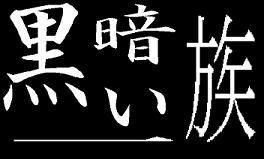This is some stuff I wrote for another forum thought I'd put it here as well.
Parkour, a movement art, discipline and sport is relatively new under that name. In the past it was known as various things such as: running from the cops, getting outta dodge, bouncing and a bunch of other ones, but parkour itself has a different philosophy that doesn't stem from necessity and has made it much more refined than running from trouble or chasing a purse snatcher.
Parkour originates from France, in a Parisian suburb called Lisses. David belle is credited with inventing it, but it should be noted that he was originally part of the group known as the Yamakasi that were his friends while he grew up in Lisses. They would devote large portions of their time almost every day to "training". Their training was largely endurance training and follow the leader type activity. It was about everyone doing the same thing despite body type and other factors that varied from person to person. As they continued to train their training became what is now known as "L'art du Deplacement" (French for the art of displacement). Many people mistake L'art du Deplacement with parkour, but they are two separate disciplines. L'art du Deplacement is about freedom in the environment, parkour is about something else. Later David Belle split off from the Yamakasi, as did a man named Sebastian Foucan (who would go on to create freerunning).
David created parkour after he left the Yamakasi. Parkour is similar to the art of displacement in many aspects but their underlying philosophies are different. Parkour is about efficient movement using through an environment whether getting to point B from point A, getting away from something or pursuing something. Philosophically parkour is about being useful. David Belle (and the other Yamakasi) were greatly influenced by the Méthode Naturelle of Georges Hebert, who was in turn inspired by Africans who were in excellent physical condition. A traceur (someone who does parkour) is expected to "be strong to be useful", this belief stems from the moral teachings that are part of Georges Hebert's Methode Naturelle.
Freerunning and L'art Du Deplacement are two disciplines that are similar to parkour in many aspects and share many of the same movements but differ philosophically. The first to exist was L'art du Deplacement, created by the Yamakasi, this discipline is about freedom in one's environment. Freerunning is Sebastien Foucan's discipline, it is about self expresion within one's environment and is more focused on aesthetics, recently there have been freerunning competitions, where freerunners are scored based on the overall aesthetic appearance of their runs, which has led many to borrow moves from breakdancing, gymnastics and various martial arts.
Hopefully this short explanation of parkour, it's history, philosophy and related disciplines has taught you a bit, if not there are many places to learn more in depth about all aspects of the discipline.
Intro to Parkour: History, Philosophy & Related Discipli
- stealththief
- Member
- Posts: 524
- Joined: Sat Sep 16, 2006 2:20 am
- Location: Hidden
- Contact:
- stealththief
- Member
- Posts: 524
- Joined: Sat Sep 16, 2006 2:20 am
- Location: Hidden
- Contact:
